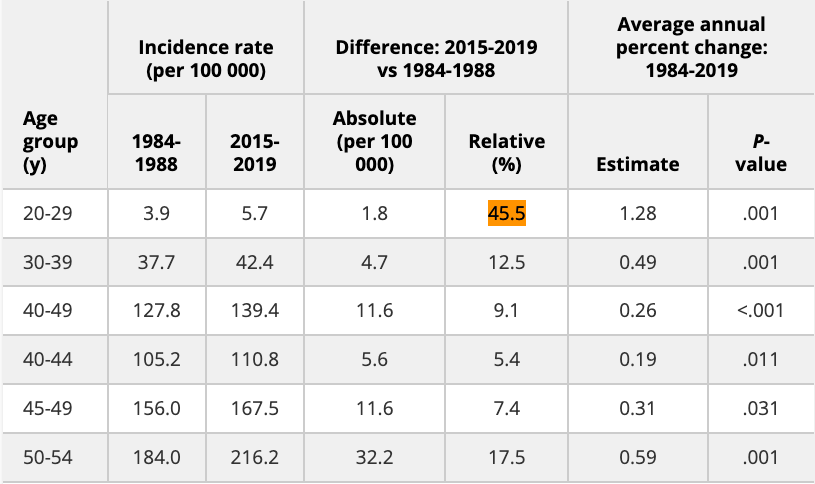A nearly 46% increase in breast cancer incidence among women in their 20s “merits greater attention,” radiologists charge in a new analysis.
Those in their 30s also have seen a nearly 13% uptick in occurrence of the disease (2015-2019 vs. 1984-1988), experts detailed in the official journal of the Canadian Association of Radiologists [1]. These data come the same week that the U.S. Preventive Services Task Force recommended decreasing the starting age for regular mammography screening from 50 down to 40.
Canadian radiologists do not believe the evidence is sufficient to cut the screening starting age back further. However, they urge peers and primary care doctors to remain vigilant.
“While the [breast cancer, or BC] incidence rates noted in women 40 to 49 can be used to inform screening guidelines for these women, the incidence of BC in women under age 40 remains insufficient to justify…screening,” Jean M. Seely, MD, a professor and head of breast imaging at Ottawa Hospital, and colleagues wrote April 25. “A greater awareness amongst individuals and clinicians alike regarding the increasing number of cases of BC in women younger than 50 is critical to allow for earlier diagnosis with its resultant reduced mortality and morbidity.”
Seely and co-authors derived their data from the National Cancer Incidence Reporting System (1984-1991) and the Canadian Cancer Registry (1992-2019), both housed at Statistics Canada. They noted statistically significant increases in breast cancer incidence among almost all age groups since 2001. Women 20-29 saw an annual increase of about 3.06% dating back to 2001. Those in their 30s also saw an annual incidence rate increase (1.2%), which traced to 2009.
Women in their 40s also recorded a much smaller annual increase since 2015 (0.77%). Same for those in their 50s since 2005 (0.38%). In fact, statistically significant increases were seen in the more recent dataset (1992-2019) for every age group except for women 45-49.
The Canadian numbers are lower than those recorded in the U.S., Seeley et al. noted, with about 20 to 30 fewer cases per 100,000 women 40 to 54. This may be due to factors such as lifestyle and racial makeup of the population.
“As there are no screening programs for women in their 20s and 30s, changes in the incidence of [breast cancer] in these women would not be related to screening practices,” the authors noted. “Rather, increasing BC rates may reflect an interplay of lifestyle, reproductive, environmental, and genetic etiologies. The American Cancer Society attributes increasing BC rates in women to behavioral risk factors such as lack of childbirths, older age at first birth, excess body weight (postmenopausal), physical inactivity, and alcohol consumption, all of which have been increasing in the USA.”
Read more about the study results, including potential limitations, at the link below.


